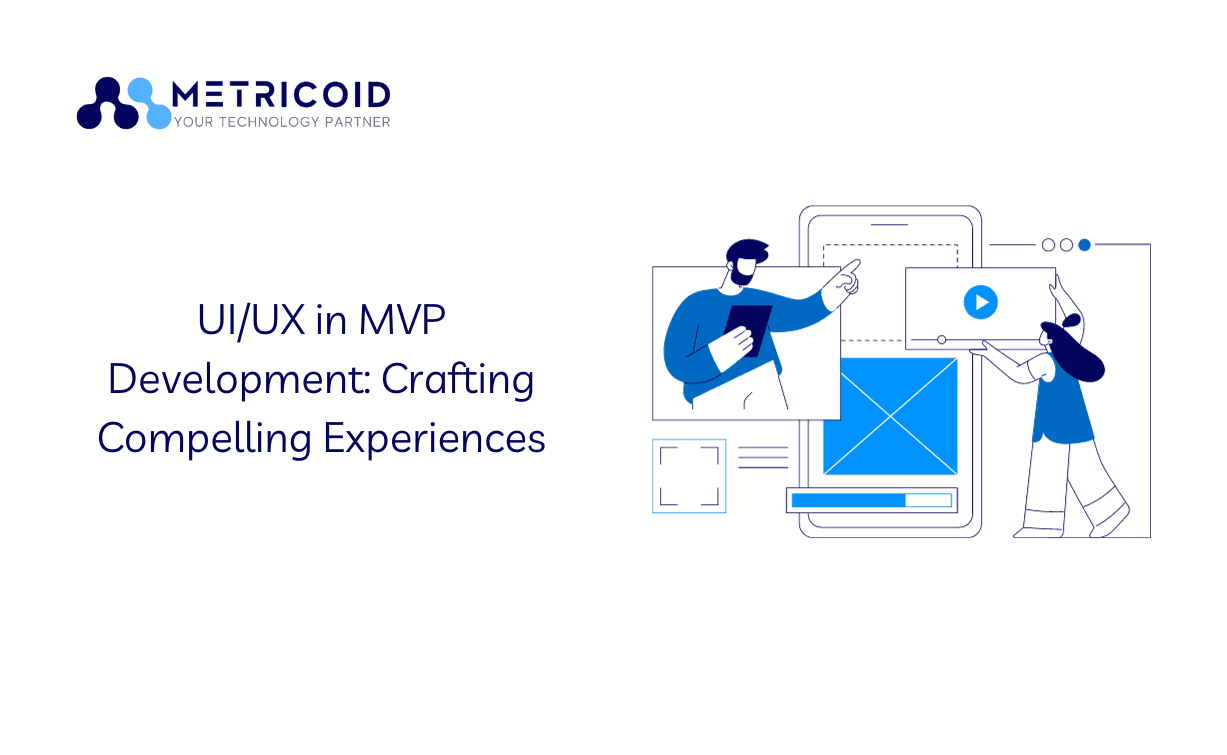In the competitive realm of product development, creating a Minimum Viable Product (MVP) that stands out requires more than just innovative features or robust technology—it needs a compelling user interface (UI) and user experience (UX). The importance of UI/UX design in MVP development cannot be overstated, as it directly influences user engagement, satisfaction, and ultimately, the success of the product.
The Gateway to User Engagement: Understanding UI/UX
UI/UX design is the gateway through which potential customers encounter and interact with your product. It’s the first impression and a continuous engagement tool that can make or break the user’s journey. In fact, according to a recent report by Forrester, a well-designed user interface could raise your website’s conversion rate by up to 200%, and a better UX design could yield conversion rates up to 400%.
The UI/UX Design Advantage in MVPs
The aesthetics and usability of your MVP are vital in establishing trust with users. A sleek, intuitive design reassures users that the product is professional and reliable.
-
Simplifying the User Journey:
Good UI/UX design simplifies the navigation process, making it easier for users to explore and utilize your MVP’s features. This simplicity is key in retaining users, as a complex or confusing interface can lead to high abandonment rates.
-
Feedback and Improvement:
A focus on UI/UX provides startups with valuable feedback. It allows them to understand how users interact with the MVP, what works, and what doesn’t, informing necessary adjustments before a full-scale launch.
Strategies for Integrating UI/UX into Your MVP
-
User-Centered Design Approach:
Adopt a user-centered design approach by involving users early and throughout the MVP development process. This includes conducting user research, building personas, and utilizing UX design principles to guide feature development.
-
Iterative Design and Testing:
Employ iterative design processes, where continuous user feedback and usability testing shape the design choices. Tools like InVision and Sketch can aid in creating interactive prototypes that can be tested and improved upon in real time.
Focus on designing the UI/UX around your MVP’s key features. Ensure that these core components are easily accessible and provide maximum value with minimal user effort.
-
Consistency Across Touchpoints:
Ensure consistency in the UI/UX across all touchpoints. Consistent visual elements, tone, and interaction patterns contribute to a cohesive user experience, reinforcing brand identity.
Facilitating User Empathy
A core tenet of effective UI/UX design is empathy—understanding the feelings, thoughts, and attitudes of your users. It’s about stepping into their shoes and experiencing the product as they would. This empathetic approach can lead to more intuitive designs that truly resonate with your user base.
Leveraging Design Thinking
Incorporating design thinking into the MVP development process can spur innovation and uncover creative solutions to complex problems. This iterative, user-centric approach to design encourages startups to think beyond conventional boundaries and develop products that truly meet user demands.
Encouraging User Engagement
Engagement is key to an MVP’s success. UI/UX design directly influences how users interact with your product—whether they complete desired actions like signing up, sharing, or returning to the app. Thoughtful design can significantly boost these interactions, turning passive users into active participants in your product’s growth.
Reducing Cognitive Load
A well-designed UI/UX helps in reducing the cognitive load on users, making the application easy to understand and use. Simplifying user tasks to their most effortless form can enhance overall user satisfaction and increase the likelihood of product adoption.
Speed to Market
In an environment where speed to market can be a competitive advantage, a well-planned UI/UX can accelerate development. By clarifying the design requirements upfront, developers can work more efficiently, reducing time spent on revisions and ensuring a quicker launch timeline.
Design for Scalability
As the MVP grows, the UI/UX design should scale accordingly. Startups need to envision how the design will accommodate additional features or an increasing number of users. Scalable design decisions made during the MVP phase can streamline future expansions.
Consistent Brand Messaging
UI/UX design is a powerful medium for conveying your brand’s message and values. Consistent visual elements and tone of voice throughout the user interface can reinforce your brand identity and help your product stand out in a crowded marketplace.
Mobile-First Design
With mobile internet consumption outpacing desktop, adopting a mobile-first approach to UI/UX design is critical. This doesn’t mean neglecting the desktop experience but rather ensuring that the mobile user experience is as polished and functional as possible.
Each of these points serves to deepen the discussion on UI/UX design’s pivotal role in MVP development, providing comprehensive insights without drawing a final conclusion, allowing for a smooth segue into the concluding section of the broader piece.
Conclusion: A Driving Force for MVP Success
In conclusion, the integration of UI/UX design into MVP development is not just an aesthetic consideration—it’s a strategic move toward creating a product that resonates with users and meets business objectives. By focusing on creating an engaging user experience from the outset, startups can significantly increase their chances of success in a crowded marketplace.






